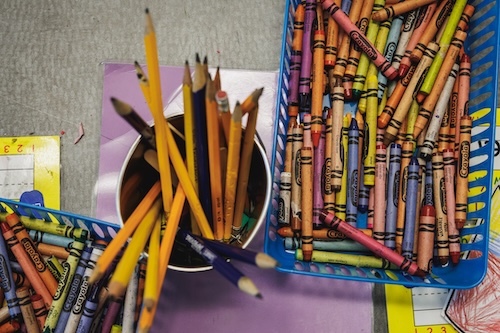
I’m excited to share insights from “Achievement and growth for English learners,” a new study that takes a fresh look at the academic progress of English learners in US public schools—research that has particularly important implications following two years of disrupted learning due to the pandemic.
One in 10 students in US public schools is classified as an English learner (EL) and identified for related services during their K–12 years. Studies examining their academic achievement have historically shown they are lagging behind their non-EL peers. Those studies have typically used a snapshot of year-over-year data based on state summative assessment results. In other words, researchers have generally compared the achievement levels of ELs to non-ELs in a given grade at a particular moment in time.
This new study by NWEA researcher Angela Johnson followed a cohort of students and looked at their academic progress over time. Using MAP® Growth™ assessments for English reading and math, which are administered up to three times during the school year, the study examined achievement data for 56,000 students across the country who were kindergarteners in 2014–15 and fourth-graders in 2018–19. This approach can shed light on short- and long-term achievement trends, such as how achievement develops over time. It also provides important visibility into differences between student growth during the school year and learning that takes place, or fades, during the summer.
Overall research findings
The study found that ELs, defined in this particular study as students who were identified as English learners every term they were tested, entered kindergarten academically behind their non-EL peers in both English reading and math. These students made gains at rates comparable to or higher than their peers during most of the academic years studied, but they lost more ground during the summer months in some years. This contributed to disparities in achievement between ELs and their peers that continued through the spring of fourth grade.
The findings highlight the great potential of English learners to make academic progress at the same rate as their peers, disrupting deficit-based thinking about their ability to succeed academically. The research also offers insights into strategies needed to help close opportunity gaps, such as creating summer learning support.
What we see in the summer months
The study found that students who are developing English proficiency made slower gains in English reading than the general student population in kindergarten and first grade. However, in second, third, and fourth grade, ELs had similar or higher rates of growth in English reading compared with other students during the school year.
The findings highlight the great potential of English learners to make academic progress at the same rate as their peers, disrupting deficit-based thinking about their ability to succeed academically.
In math, ELs grew at rates similar to or higher than their peers in all grades.
What happened in the summer months? The study compared students’ spring MAP Growth assessments to their fall assessments to understand the degree to which ELs lost ground academically in the summer as compared to their peers. In English reading, these students had more summer learning loss than their peers after second and third grade. In math, they had greater summer learning loss than other students after kindergarten, second, and third grades.
So, even though in most school years ELs grew academically at the same rate or faster than their peers, summer learning patterns made it difficult to close opportunity gaps. In sum, schools should provide support for ELs to grow more in every grade and address loss during out-of-school time.
The COVID context
Students have experienced two years of disrupted learning due to COVID-19, with marginalized students most affected.
ELs have been less likely than their peers to access in-person and virtual instruction and critical services during key moments in the pandemic. When schools were mostly operating remotely, districts with high numbers of ELs reported that less than half of these kids were logging into online instruction. Barriers included a lack of access to devices and broadband, difficulties families had supporting at-home learning, and inadequate training for teachers.
While the latest research shows ELs largely make academic gains at rates that are equal to or greater than their peers, they start off with lower test scores and lose more ground during periods of out-of-school time. On top of all that, the pandemic learning conditions for these students have been less than ideal, further disadvantaging them.
[S]chools should provide support for ELs to grow more in every grade and address loss during out-of-school time.
Thankfully there is an unprecedented infusion of federal dollars flowing into districts through the Elementary and Secondary School Emergency Relief Fund (ESSER) that can go toward closing long-standing opportunity gaps and inequitable learning patterns resulting from the pandemic. These funds will support ELs in the short term, but in the long term, additional investment in Title III is needed to close the long-standing opportunity gaps.
Suggested strategies
Providing early interventions and high-quality summer programming for students who are learning English makes sense, and this has been underway in some parts of the country. For example, Texas districts, such as McAllen ISD, offered summer learning programs for ELs entering kindergarten or first grade in recent years.
The organizations Unidos, The Education Trust, and Next100 collaborated around a series of recommendations for leveraging ESSER funding to accelerate learning for ELs. Here are their tips:
- Engage linguistically diverse families and communities by eliminating communication barriers, partnering with community-based organizations, and conducting digital literacy training.
- Accelerate learning for kids learning English with targeted supports, such as summer programming and supports extended throughout the year.
- Provide social and emotional, physical, and mental health supports, including hiring multilingual counselors and mental health providers.
- Ensure efforts are sustainable and support long-term improvements, such as investing in a well-trained, diverse workforce and developing systems to monitor the progress of ELs.
By taking steps like these, education leaders will be going a long way toward helping ELs close existing opportunity gaps and ensuring they thrive in school and beyond. For more details on how to put these tips into action, see the full list of recommendations.
Looking ahead
We at NWEA hope future research continues to leverage rich achievement and growth data to help schools better support their linguistically diverse student populations. Additionally, partnerships between school districts and researchers can help address important questions, such as how academic achievement and growth patterns vary by English proficiency. Growth data, combined with achievement scores and data from native language assessments, will also help schools monitor academic progress for students who are learning English both before and after they exit language support services.
There’s a lot we can do to help all students succeed. It’s our responsibility to help them learn all year long.
For more, read the study’s working paper and our brief, “Academic growth for English learners: Lessons from school-year learning gains and summer learning loss—Implications for COVID-19 recovery and beyond.”







